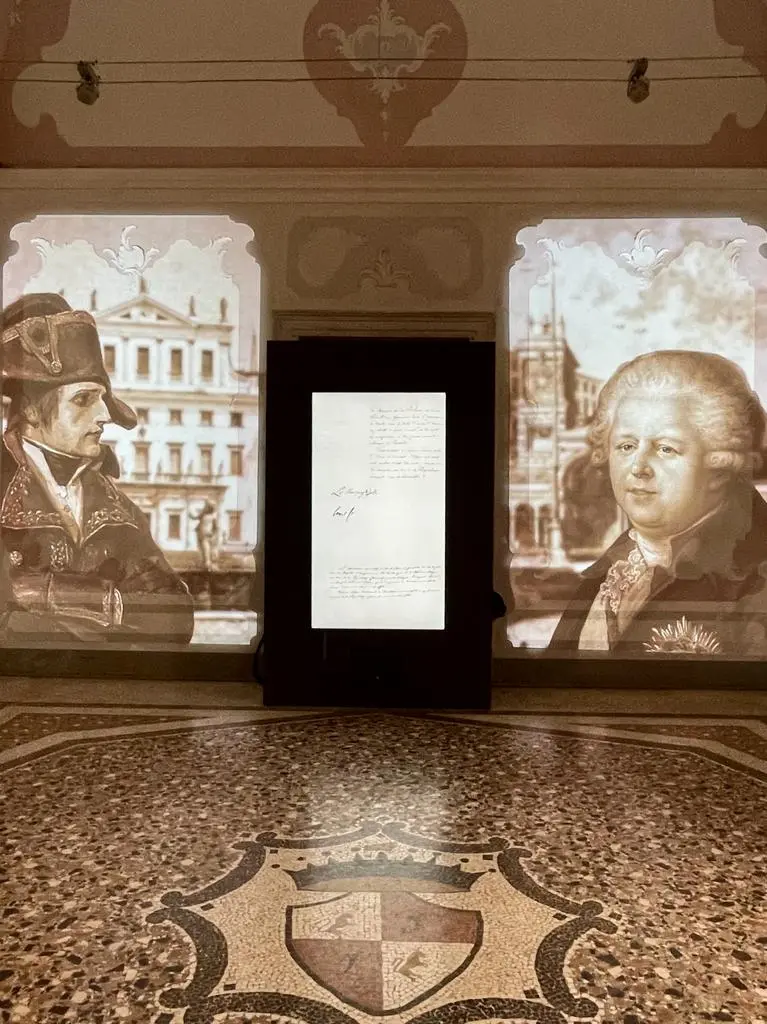The treaty of Campoformido
Napoleon and the dissolution of the Serenissima Republic
The Treaty of Campoformio was signed on 17 October 1797 at Villa Manin and marked the end of the thousand-year history of the Most Serene Republic of Venice at the hands of Napoleon.
What events preceded the treaty? Who participated in the negotiations? Why is it known as the ‘Treaty of Campoformio’ even though it was signed at Villa Manin? Let’s find out more about a historical event that helped redefine European borders between the 18th and 19th centuries.
The Napoleonic Wars and the New European Borders
The end of the Venetian Republic
In May 1797, Venice found itself caught up in the conflict between France and Austria.
Doge Lodovico Manin, who went down in history as the last doge of Venice, had, in fact, opted for a policy of neutrality in the clash between the two European powers.
However, the Serenissima’s territories on the mainland were tactical for Napoleon’s attacks on Austria and he settled there. The presence of French troops triggered a popular uprising and gave Napoleon the pretext to impose an ultimatum: if the Serenissima’s government did not form a military alliance with France and implement changes in its institutions to limit the power of the aristocrats he would attack it.
To prevent the military conquest of Venice by the French, the doge had no choice but to decree the end of the aristocratic government of Venice, abdicate his role and hand over power to a new institution: the democratic Municipality.
All this took place in front of the Great Council of Venice in session on 12 May 1797.
What consequences did the Treaty of Campoformio have?
The meeting of the major council on 12 May was only the first step towards the end of the Serenissima and the loss of Venice’s autonomy: the fate of the Republic was sanctioned by the Treaty of Campoformido on 17 October.
This agreement between the French and the Austrians led to the cession of Veneto, Friuli, Istria and Dalmatia to Austria, which became the ‘Venetian Province’ of the Austrian Empire.
In return, Napoleon’s France obtained Lombardy and Belgium, as well as a retreat of the German borders as far as the Rhine.

Villa Manin: the room where history was written
Where was the Treaty of Campoformio signed and by whom?
Although named after the nearby town of Campoformido, the treaty was actually signed in the treaty room at Villa Manin in Passariano.
The hall can still be visited today and is a must-see for history enthusiasts.
The historic treaty was really supposed to be signed in Campoformido, a town symbolically chosen halfway between Villa Manin, Bonaparte’s residence, and the Austrian headquarters in Udine. But at the last moment Napoleon forced the Austrian delegation to join him at Villa Manin.
Here, Napoleon Bonaparte, commander-in-chief of the Italian Army, met the Austrian plenipotentiary Count Ludwig von Cobenzl.
It was a feverish meeting that sealed the fate of Italy and Europe, and contributed greatly to Napoleon’s political rise.
Reliving history: the immersive experience
To recount all the background to this watershed event in history, Villa Manin presents an immersive experience that allows visitors to relive the night of 17 October 1797 alongside Bonaparte and other figures who decided the destiny of Italy.
The Treaty of Campoformio remains a testimony to the complex diplomatic manoeuvres that changed territorial borders and redefined the geopolitical landscape of Europe at the end of the 18th century. Villa Manin, where the end of the Serenissima Republic was sanctioned, is a must-see for historians and enthusiasts.
